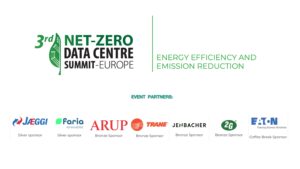Generative AI is no longer a future concept—it’s becoming the defining force in how industrial water systems are designed, managed, and scaled. Today’s operators face tightening discharge limits, unstable water sources, and aging infrastructure not built for rapid change.
Gen AI isn’t just software that follows rules—it rewrites them. And by 2030, the plants that embed this capability will operate miles ahead of those still adjusting setpoints by hand. Below, we unpack how that shift will unfold—quietly at first, then all at once.
Rebuilding Industrial Water Design from the Inside Out
AI won’t be tacked on, it will be built into the design DNA. In the next few years, system architecture will move from reactive planning to proactive simulation, driven by generative AI that models, predicts, and configures. This section covers how design, setup, and ecosystem integration will change at their core:
Design That Reacts Before Reality Hits
Design used to be about experience. But that’s not good enough anymore. Generative AI will allow engineers to model thousands of potential designs—not hypotheticals, but field-tested predictions rooted in real and synthetic data. These models don’t just output technical diagrams. They surface vulnerabilities, simulate stress conditions, and generate failure-resistant plans before pouring concrete. Moreover, in sectors where water demand fluctuates daily or treatment targets shift monthly, this design foresight becomes operational insurance.
Responsive Logic, Not Static Rules
Most SCADA setups are stuck in if-this-then-that logic. But plants rarely behave that cleanly. By 2030, AI in wastewater treatment will be led by models that continuously regenerate logic based on live feedback. They won’t just raise a flag when conditions shift—they’ll adjust process logic in real time to keep operations stable. That level of adaptability matters most when discharge thresholds are tight, because even a small delay can trigger a violation or force an emergency response. These systems won’t just adapt, they’ll anticipate, recalculate, and keep pushing toward efficiency.
Commissioning Becomes a Living Process
Today, commissioning is a handover moment. Tomorrow, it’s a living cycle. Instead of tuning equipment post-deployment, engineers will run generative simulations during setup, allowing the system to calibrate itself. Flow rates, chemical ratios, and redundancy logic—it will all regenerate when upstream conditions shift. This model isn’t just plug-and-play – it’s plug, run, learn, and improve. Additionally, over time, even minor tweaks—like a change in influent chemistry—will automatically trigger system re-optimization without a technician on standby.
Optimizing Water as an Ecosystem, Not Units
When each asset runs in isolation, water management gets stuck in trade-offs. That’s where digital twin infrastructure meets generative AI. By modeling the full site—from raw intake to reuse—you don’t just monitor each subsystem, you orchestrate them. The system balances cooling, boiler feed, discharge, and recovery loops in real time. It prevents overloads and makes reuse possible where water was once wasted. The result: plants that behave more like adaptive ecosystems than static facilities.
Smarter Operators, Not Fewer: AI as Co-Pilot in Water Ops
Let’s kill the myth: AI doesn’t remove people, it makes them indispensable. As operations shift from manual controls to collaborative intelligence, teams will need to understand not just the “what,” but the “why” behind system behavior. This section explores how generative AI supports human decision-making without dumbing it down:
AI That Speaks Operator, Not Engineer
Today’s alerts flood screens. Tomorrow’s AI systems will give you clarity: “High-pressure fault predicted within 5 hours. Cause: membrane load imbalance. Adjust pump rate by 8%.” That’s the voice of generative AI done right. It won’t try to impress with jargon. It’ll explain, in real-time, what’s going wrong and how to fix it. Furthermore, in moments of system stress, that’s the difference between catching an issue and chasing it.
Keeping Tribal Knowledge Alive
Veteran operators hold years of critical insight—insight that rarely makes it into manuals. But with smart water management systems, AI can learn from historic actions, operator notes, and failure logs. The result: a system that doesn’t just track what was done, but understands why. Ask it: “How did we handle this turbidity spike last year?” and it’ll retrieve not just data, but precedent. That’s how teams maintain quality, even as staff turn over.
Feedback That Refines the Model
If AI outputs a poor recommendation, most systems flag it and move on. But in the next wave, every correction feeds back into the model. That feedback loop is what sharpens recommendations over time. Operators don’t just respond—they coach. Moreover, if a chemical dosing strategy proves too aggressive, that decision trains the system not to repeat it. This isn’t oversight. It’s co-creation—and it ensures that AI grows with your facility, not away from it.
Real Training Inside Virtual Facilities
Training manuals aren’t enough anymore. New hires need experience, but without the cost of real-world failure. That’s where digital twin simulations come in. These AI-powered replicas let teams test failure responses, practice shift transitions, and walk through what-if scenarios inside a safe digital shell. Whether it’s pump stalls or sensor outages, your team will have already solved it before it ever happens. It’s not training; it’s muscle memory, built ahead of time.
Building Resilience: Predictive, Circular, and Regulation-Ready
Plants today are caught in the crosshairs of stricter ESG targets, aging infrastructure, and escalating compliance risk—all at once. And only plants that think ahead will survive the pressure. This section explores how generative AI supports continuous monitoring, predictive maintenance, and circularity in high-performance industrial water systems:
Forecasting Non-Compliance Before It Hits
Regulatory violations don’t come out of nowhere; they build quietly, one missed adjustment at a time. With generative AI, systems can model expected discharge trends, flagging non-compliance days in advance. No more chasing spreadsheet trails or retroactive reporting. The system watches thresholds and tells you what to change before you cross the line. In addition, in a future where ESG targets are tied to capital access, that kind of foresight is not just valuable—it’s necessary.
Scenario Playbooks, Not SOP PDFs
SOPs assume ideal conditions. But real plants face blackouts, contamination, and failing assets—often at once. Generative models allow you to pre-script “if-then” scenarios that reflect your plant’s dynamics. When the unexpected hits, your team doesn’t guess; they follow a recovery sequence that the AI has already tested hundreds of times. It’s not automation – it’s readiness at scale.
Maintenance Based on Risk, Not Time
Scheduled maintenance wastes money. Deferred maintenance risks collapse. What you want is precise timing, and AI in wastewater treatment enables just that. These systems don’t just track usage—they simulate wear, account for external stressors, and recommend action based on projected failure points. So, no more calendar-based checks. No more early part swaps. Just focused interventions where they count most.
Circularity You Can Track in Real Time
Most plants say they recycle water. Few know how much, how often, or how efficiently. That changes with smart water management systems guided by AI. These tools track flow reuse, energy input, and recovery yields—not monthly, but by the minute. They also model what increased circularity would demand—whether that’s extra filtration, load balancing, or smarter equipment sequencing. You won’t just see where your system stands—you’ll know exactly what it takes to move forward.
To Sum Up
The conversation around generative AI in industrial water is missing the point. Generative AI isn’t just changing how we run water systems—it’s changing what we expect from them. By 2030, the gap won’t be about size or budget. It’ll be about mindset: which teams built systems to think and adapt—and which ones didn’t.
If you want to be in the room with those shaping that future, join us at the 2nd Industrial Water & Wastewater Management Summit 2025 on the 7th-8th October in Barcelona, Spain. Learn from operators who are doing it now, not talking about it later.




